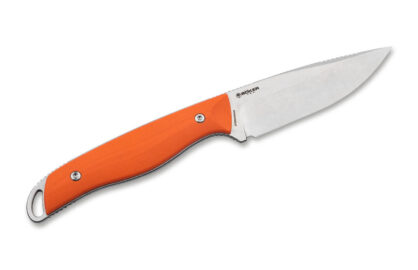5 Popular One-Handed Opening Knives that Have Barely Changed in a Decade

These 5 one-handed openers have stood the test of time and have barely changed in a decade. This is remarkable in an industry driven by innovation where most knives don’t make it to their 5th birthday and many turnover so quickly they never get to see a second production run. Knife models that do survive usually go through major upgrades based on user feedback and to keep up with the competition. These 5 knives continue to succeed in the marketplace having made minor tweaks and major changes occurred only when the brands launched new variations within the series.
New knife people are constantly rediscovering these popular models and according to Jason Kunkler of KnifeCenter – past owners keep coming back too: “What these knives have in common is that they see heavy use, and when it’s time to buy a new knife the user replaces their old knife with the exact same model.”
Benchmade 940
Featuring a 3.4” blade tucked into a knife weighing a mere 2.9 ounces, the Benchmade 940 upstages knives many years its junior. Featuring Benchmade’s axis lock, the knife locks up strong and is smooth and quick to deploy. The unique reverse tanto blade shape, designed by knife maker Warren Osborne, balances a sturdy tip with an ample slicing belly. Back in 2005, Benchmade made the 940 in 154-CM steel; today you can get the same green aluminum version with CPM-S30V. Some reviewers insist that the Benchmade 940 is one of the best one-handed openers ever produced.
Kershaw Leek
Designed by Ken Onion, the Kershaw Leek is slim, lightweight, and has a modified wharncliffe blade with a needle-like tip. Manufactured in Kershaw’s Oregon, USA facility, the Leek helped popularize Onion’s patented Speedsafe assisted opening technology, which uses a torsion spring to hold the blade closed and help to propel it open. Kershaw, who retains the rights to the Speedsafe mechanism, still include it on new knife platforms. A decade ago, the Leek came with 420 stainless steel blades, but Kershaw has since updated the standard steel to Sandvik 14C28N.
Emerson CQC-7
The Emerson CQC-7 (Close Quarter Combat) knife helped define and popularize the ‘tactical folder’ as we know it today. In 2005, it had the same black G-10 handles, asymmetrical chisel grind, 154-CM blade steel, Phillips head screws, and titanium locking liner as it does today. In 2013, Emerson moved away from backspacers and began constructing most of his knives with standoffs, but haven’t changed the design or functionality of the knife.
Spyderco Military
With a blade length of 4”, the Spyderco Military is among Spyderco’s biggest knives. For a knife this large, the Military is quite svelte with a weight just over 4 ounces thanks to its minimal nested steel liners. The overall design hasn’t changed since 2005, but it’s been subtly refined over the years. Today’s Military model has more pronounced jimping and an additional nested liner for strength, but shares the same tip-down clip and CPM-S30V blade steel as the 2005 version.
Al Mar SERE 2000
Like the Emerson CQC-7, the Al Mar SERE 2000 was one of the first modern tactical knives ever made. Designed by Al Mar and Colonel Nick Rowe in the early 1980s for the Army’s SERE School (Survival, Evasion, Resistance, Escape), these aggressive spear point blades were made to handle anything a soldier might encounter in a SERE situation. Its discrete deep-carry clip was ahead of its time and is just as useful in today as it was in 2005.





















4 Facebook Comments